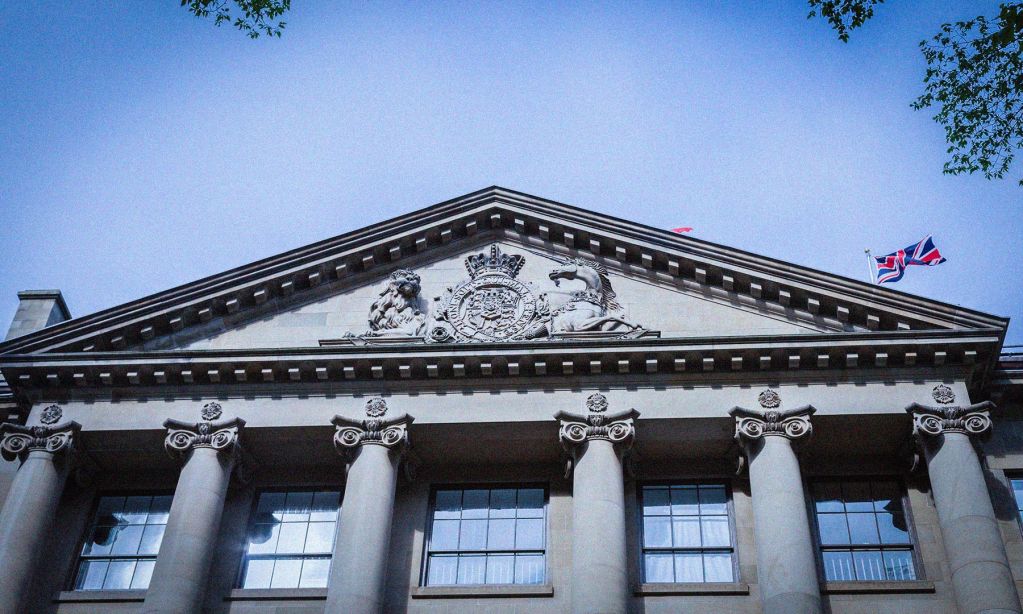There is a lot the provincial government can do to alleviate the layers of insecurity being felt by so many. It can choose to ensure that the wealth in our province is shared equitably, including funding public services that play a critical role in levelling the playing field—such as child care, public education or post-secondary education—and also in direct income support.
Building a province where no one is left behind requires changing how we tax and spend. This budget does not fundamentally change either.
Nova Scotians are still dealing with the fallout of fires, floods, hurricanes, and now extreme winter storms.
Our society leaves many depleted and even fearful of the future. Will they be able to afford rent next month? Will their landlord find a way to evict them? Will they be able to afford food for their family?
Generations of young people who feel trapped under the weight of student debt are now facing multiple crises—climate, housing, and healthcare, to name a few.
For too long, governments have neglected to address structural and systemic inequalities that prevent many Nova Scotians from reaching their full potential. This budget does little to move the needle for a brighter future despite its ambiguous title, “Building Nova Scotia, faster.”
Nova Scotia’s financial capacity
Nova Scotia’s financial situation continues to improve, which means the province has the financial capacity to act on pressing issues. Provincial tax revenues are up, driven by the increase in population, inflation, and federal transfers. Yet, comparing government expenditure to the size of the economy shows that we are spending the same portion as we did in 1983—the second lowest provincial spender on government programs per capita in the country (in 2023-24).
This financial capacity, combined with the fact that the provincial government can borrow money more cheaply than the private sector, means the province should move urgently to address the infrastructure deficits and the tears in our social fabric.
What funding was allocated in budget 2024/25, that will patch the holes in the social safety net and our public social infrastructure that helps people deal with the current crises, mitigate the impact of the next one, and invest in prevention?
Very little and certainly not the scale and scope of the needed public investment.
The Nova Scotia government does at least recognize that deficit spending is needed (the 2024/25 deficit and the debt to GDP is projected to be 34.6 per cent) and is likely to be lower given that the government is, unfortunately, lowballing revenue. They ended last year with a $40 million surplus, which is money that could have been invested to address Nova Scotians’ needs. We have said being overly conservative about revenue growth is problematic for decreasing expectations of what is possible. This has also been flagged by the auditor general as well from a transparency and accountability perspective when they spend so much outside of the budget.
There are also, unfortunately, some signals that they plan to head into austerity—planning to arbitrarily decrease the deficit and being overly concerned about the debt to GDP ratio (which is still manageable). Decreasing the deficit and the debt should only be part of a plan to invest in economic growth, make taxes more progressive, or introduce initiatives to address income and wealth inequality. Instead, they are projecting very little growth in spending after 2024/25. What will this mean for public programs—cuts in staffing and wages?
Making life more affordable?
As for support for those struggling with food and rent; food increased another 5.3 per cent year over year (tied for the highest in the country), and rent increased by 12.3 per cent. NS Power energy prices have also increased by 14 per cent over the past two years.
We have the fiscal capacity and the solutions to help make life more affordable; it just takes political will. And yet, there is very little additional income support. Income assistance recipients will face another year where inflation erodes the measly amount of money they have to pay for the necessities of life. The total amount of welfare income available leaves all recipients in deep poverty, with a single person deemed employable needing almost $17,000 more per year to reach the poverty line (receiving only 48 per cent of the income they need, according to the Market Basket Measure). Another $150 one-time payment barely covers the additional inflationary cost per month for the basic food basket costs for one individual.
We do applaud the $300 per month increase in the form of the disability supplement for those on income assistance who have a disability, but even they remain in deep poverty. Adjusting the very low base amount to inflation would have been a step in the right direction, but still quite insufficient if we seek to reduce the suffering of those who have turned to the government for help as a last resort.
What about poverty reduction?
There is nothing new in this budget to address child poverty despite what the government claims. In the last two years, the annual payment for families at the lowest income level has increased by $600 per child to $1,525 (this increase was annualized this year) and completely phases out when a family’s annual adjusted net income is even a dollar more than $34,000.
This did little to lift families with children out of poverty when you consider the poverty gap for the single parent with one child who had a welfare income that was $15,350 below the poverty line. As our child poverty report cards have underlined, small incremental increases make little difference. There is no excuse for the inaction on reducing poverty.
Funding a school lunch program is undoubtedly important, but this does not address food insecurity or child poverty. Food insecurity is about households being able to afford food for their families all year round in their homes. A school food program is a public service that recognizes the need to ensure that children are well nourished when they learn and helps families not have to prepare lunches—while school is in session. It is part of funding a public education system.
What about the housing situation?
With a threat of encampment evictions in Halifax this week, uncertainty with temporary shelters, and almost no affordable rentals on the market across the province, the announcement of 600 public housing units and 500 additional rent supplements falls far short of what is needed. There are about 7,800 people on the waitlist for public housing. The estimate of core housing need is as many as 48,000.
There had been some indication that the government might move to invest in a new Compliance and Enforcement Division for the Residential Tenancy Act, but there is no movement towards this in this budget. Why is Nova Scotia Legal Aid’s funding being cut? Nova Scotians need more advocates in their corner, not fewer.
Health Care Expansion? What Kind?
Given the need to increase the health care system’s ability to meet the needs of a growing and ageing population, there is again a focus on a substantial increase in health care. This government has demonstrated a dangerous trend toward privatizing public health services, however. This must be stopped and reversed. Services like virtual care can easily be delivered on a public, not-for-profit basis. There is a lack of transparency on the spending in this budget.
Public Education?
The Nova Scotia government needed to increase its investment given the population increase, but it also needed to expand the support in the current system. Will the 12 per cent additional funding really address the challenges with increased enrollment, teacher shortages, and to address the complexity of needs in the classroom?
The announcement of a two per cent increase in university funding made pre-budget was disappointingly low. The funding comes with troubling strings attached to academic freedom and those we have been calling for related to senior administrative bloat.
There is nothing new in this budget to address high and rising tuition. It is capping tuition at two per cent, down from three per cent (while mandating a nine per cent for international students). What about student debt? It is time to bring down tuition, which has increased 56 per cent since 2013, and convert all student loans to grants. The government should not just call on universities to create housing without additional funding.
The reduced cost of licensed child care has helped many families, but many still do not have access. This budget was a missed opportunity to invest more (over and above the bilateral) to expand full-day, full-year non-profit child care at $10 a day (free to low-income families) to meet the needs, setting up the central agency and continuing to invest in the training, wages, retention and recruitment of ECEs into licensed non-profit care. A little more investment is needed in the action plan.
Fair taxes?
What about ensuring that those who can pay more, contribute their fair share?
Across-the-board tax cuts reward those with the most income because our tax system is built that way. Regardless of how these cuts are spun as helping those low and middle-income earners, this is a cash grab for those already benefiting from high-interest rates in their investments and have been the least harmed by the pandemic fallout.
The tax bracket inflationary adjustment also rewards higher-income earners much more than anyone else (an average cut of $863 for those earning $150,000 and more and $69 for those earning $29,590 or less). This will cost $160 million per year once fully implemented and will have very little impact on those who need it the most. This will exacerbate the inequalities that exist.
Return on Investment and Outcomes Matter
We can direct our spending towards those most in need. We can solve the housing crisis, protect ourselves from the harmful and growing impacts of climate change, and end poverty. When we use public spending to reduce inequality, we know there are long-term benefits. This budget does not take advantage of opportunities. A $425 million dollar tax cut (HST rebate) for property developers does not have the return on investment needed to justify the expense.
Nova Scotians need more than headlines faster.







